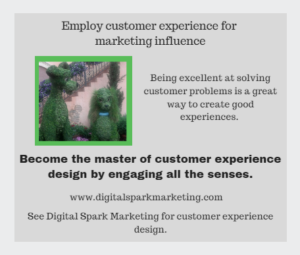Can you imagine the amount of leadership learning from the US Army in the last decade? Perhaps some of you were there and learned firsthand. Many collaborative leadership lessons learned that are grasped and are now being applied.

Check out our thoughts on team leverage
Follow these tips: Teamwork and Collaboration: 14 Tactics to Get You Better Results
It has been noted a regular occurrence in the antiterrorism campaigns in Afghanistan and Iraq was the direct communication between Army soldiers on the ground with US Air Force pilots overhead. An excellent example of collaboration that did not occur on a regular basis before these wars.
Are you one that believes that creativity and collaboration can be learned? We are among that group. We also believe in suggestions for innovative thinking can boost team collaboration through effective leadership. Through a series of sparks and not a single flash of insight. Certainly our way of thinking.
Before we continue, let me ask you a question.
What leadership style works best in your business? We would love to hear what it was. Would you do us a favor and post it in the comments section below? It would be greatly appreciated by our readers and us.
Collaborative efforts like this were but one of many that enabled the US military to reinvent their leadership skills. Over this decade through these wars, the military has learned to be nimble and much more flexible.
How many times in your business career have you been in an organization where real energy was expended to build collaborative teams? How successful were these efforts? To build team collaboration is not an easy job, is it? But we’d all agree that the payoffs certainly outweigh the efforts, wouldn’t we?
Over the years in my career, I’ve had the good fortune of being exposed to many smart people and worked as part of many teams trying to build team collaboration.
It never ceases to amaze me how just a few moments of discussion, or sitting and listening to well thought-out debates, can open your mind to ideas you can’t believe you didn’t think of on your own.
Creative convergence depends on group collaboration … how well do you work in groups?
Future business leaders would do well to take a close look at these lessons that have been so valuable in bringing about the military’s transformation in collaborative leadership. In particular, these lessons have high applicability to the challenges business leaders face today.

Capitalizing on distributive intelligence
The military’s competitive edge in information technology pays off best when it is translated into a tactical advantage.
But since one of the first principles of warfare is that something unexpected always happens, leaders who learn to exploit the unexpected turn out to be the most successful.
The lesson learned was to supply infantry with the best information available and let them act on it in near real-time for the best tactical advantage. This eliminated all the other communications and showed that the intelligence on the ground could beat even the best enemy.
Collaborative leadership skills … speed not perfection
Have you ever read any of Karl von Clausewitz’s Fog of War? If you have, you would know it refers to the uncertainty and indeterminacy that occurs when you combine a rapidly changing environment of operations, less than perfect intelligence, and less than precise leader communication.
The lesson learned here was that the 70% solution is much more preferable because it avoids the decision to wait for all the data that never comes or even exists. Such a methodology fosters explicit decision making by design and not by default.
Collaborative leadership … communicating the vision
It is amazing that everybody in the military has a great appreciation for the organization’s values. Take for example selfless service, the notion of being a public servant, and the idea of a higher calling. Military personnel accept they will never get paid what the real job is worth, but have a way to tap into much deeper intrinsic rewards.
The lesson here is for leaders to listen deeply to employees so as to identify what is crucial to them. This information can then be used to be aligned with the business mission and values.

Learn from results
Reaping the real-time insights of soldiers on the ground required the military to alter its command and control models. This was similar to a mini-social revolution. One of the principal mechanisms for a change was the introduction of the after-action report (AAR).
The AAR was a method of debriefing that encouraged participants to examine critical incidents without assigning blame. The lesson here is to develop leadership throughout the organization in a way that lets subordinates take responsibility for decisions, even though they may be flawed.
Supporting collaboration
Military leadership learned early that they must very willingly share their success with their contemporaries who they knew helped them succeed in reaching mutual goals.
Companies regularly espouse the value of cooperation and teamwork, only to undermine these aims with reward systems that encourage sub-optimization at the expense of the corporate whole. I can’t tell you how often I fought against this methodology. A sturdy wall to tear down.
Collaborative leadership lessons … people are the core
Simple gestures can go a long way here. When you make your people concerns your own, you make it easier for them to succeed. The lesson here is to focus on taking care of people and their future. That is critical to developing motivation for the team.
The bottom line
The moral of this story is that a collaboration culture can have a significant influence on leadership and team development. If these different thoughts are possessed by your current leadership team or your emerging leaders, you will be in a good position for the road ahead.
Make no mistake. To change fundamental behaviors you have to change fundamental beliefs. Even if the goals of an initiative are highly technical, to transform an organization you first need to transform the people in it.
The truth is that any transformation isn’t an endpoint, but a journey. To succeed, you have to be in it for the long haul.
Which of these thoughts on leadership collaboration stands out to you? Do you have any other ideas of effective leaders worthy of mention? Leave a comment and share your insights with other readers and us. We would be very interested in your thoughts.
